
A hugely ambitious rewilding initiative in Argentina’s Iberá Wetlands is revitalising nature and local communities, realising a 30-year dream
By Daniel Allen and Cain Blythe
From the air, the blue-green patchwork of the Iberá Wetlands (Esteros del Iberá) extends towards every horizon. Networks of channels and creeks adorn the lusher parts of the landscape like shimmering necklaces, connecting lakes and lagoons dotted with yacaré caiman. Squadrons of ibis, egret and spoonbill criss-cross the sky, hinting at the breathtaking biodiversity of this unique aquatic ecosystem.
The Iberá Wetlands earn their indigenous epithet – ‘y bera’ means shining waters in the language of the local Guaraní people – 100 times over. Located in northeast Argentina’s Province of Corrientes, 700 kilometres from Buenos Aires and just south of the mighty Paraná River, they’re one of the most important freshwater wetlands in South America, second only in size to the Brazilian Pantanal. A sprawling 13,000-square-kilometre wilderness of floodplain, grassland and subtropical forest (of which 7,500 square kilometres are protected by the Great Iberá Park), they are home to more than 4,000 species of animal and plant, including the capybara, giant anteater and the revered yaguareté (jaguar), not to mention more than 360 species of bird, including the flightless greater rhea, which stands about 1.5 metres tall.
Yet Iberá hasn’t always been such a vibrant oasis. Activities such as illegal hunting, cattle ranching and intensive forestry have historically threatened the landscape, leading to the degradation and disappearance of many important wildlife populations.
‘When we first came here in the early 1990s and flew over Iberá, we hardly saw any large wild mammals,’ says Sofia Heinonen, a biologist from Buenos Aires who is now executive director of Fundación Rewilding Argentina (FRA), which works to establish protected areas, rewild ecosystems and enable local communities to benefit from nature. ‘There were a lot of cows – and not much else.’
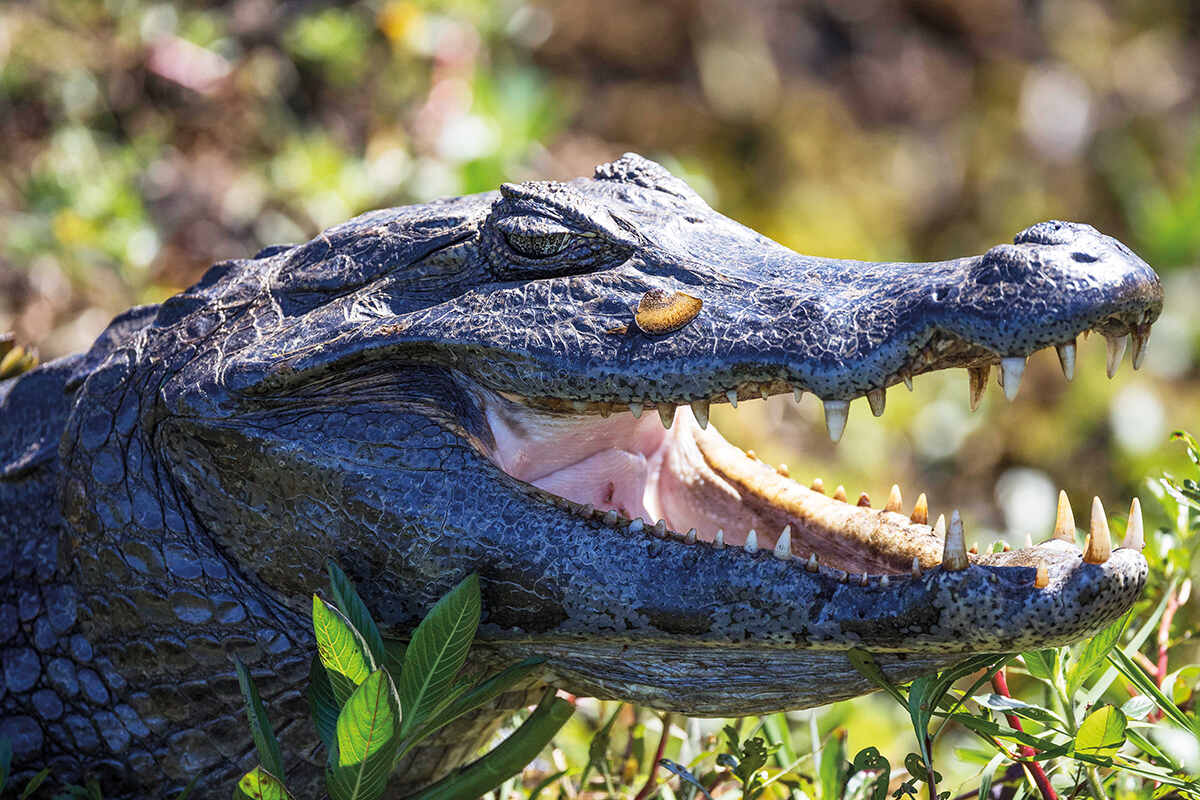
A wild idea
Heinonen was accompanied on those flights by entrepreneurs-turned-conservationists Kristine Tompkins and her late husband Doug – the former CEO of Patagonia and founder of North Face and Esprit respectively – who had relocated to South America from the USA to engage in large-scale conservation through their non-profit organisation, Tompkins Conservation. Struck by the beauty of the landscape, the couple began to buy land.
In 2010, FRA was spun off from Tompkins Conservation and it now manages Great Iberá Park, along with a burgeoning portfolio of other projects. Yet Kristine Tompkins still maintains a huge interest in and fondness for Iberá, which kickstarted her own rewilding journey.
‘In the beginning, the idea was to simply solidify territory in Iberá and protect the landscape,’ she explains. ‘Then we discovered that so much wildlife was missing – that keystone species such as the jaguar, giant otter and red-and-green macaw had been extinct here for many decades.
‘Doug and I were from the United States, where the wolf had been reintroduced in Yellowstone National Park, so we understood the importance of keystone species and their role in maintaining healthy, balanced nature,’ she continues. ‘Iberá made us realise that we weren’t just in the business of creating national parks. Only by embarking on a long-term rewilding programme could we hope to transform this wetland into a fully functioning ecosystem once again.’
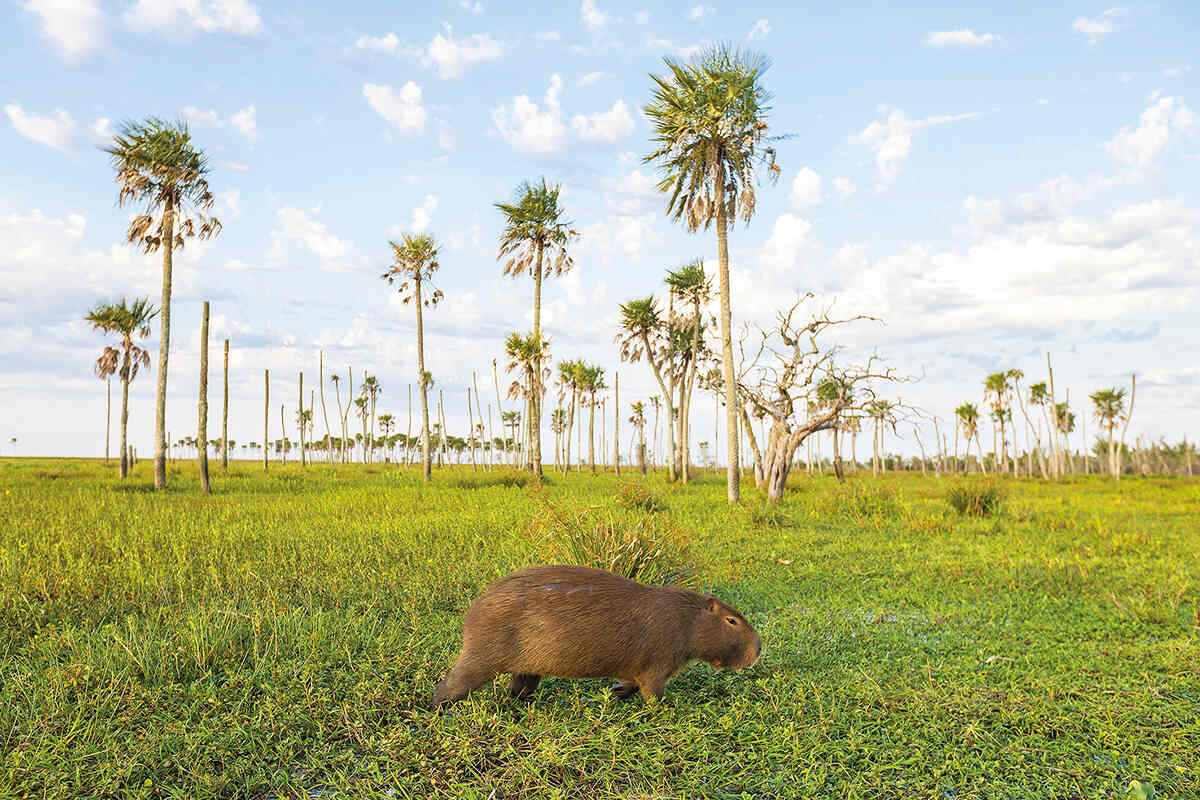
Keystone carnivore
Curling her lip back to reveal huge yellow canines, Malu, a five-year-old female jaguar, is a lithe, 60-kilogram bundle of menace and muscle. Eyes of liquid amber warily track the humans on the other side of the enclosure – no jaguar likes to share its food. As the snarling subsides, she applies the full force of her jaws to a bone, breaking it in half with a resounding crack. Here on San Alonso Island, deep in the interior of Iberá, it’s pretty clear who the apex predator is. The jaguar is the flagship species of Iberá rewilding. South America’s top feline and the world’s third-largest big cat, this powerful predator balances wetland ecology by controlling populations of herbivores such as marsh deer and capybara. This, in turn, slows soil erosion and allows vegetation to grow. Jaguars also help to establish an equilibrium among other predatory species, such as pumas and foxes.
Jaguar populations once extended right across the Americas, from the southwestern tip of the USA, through Central America, to Patagonia in southern Argentina. But habitat loss and fragmentation, hunting and human–wildlife conflict have seen it eradicated from nearly half of its original range. It’s now classified as near threatened by the IUCN.
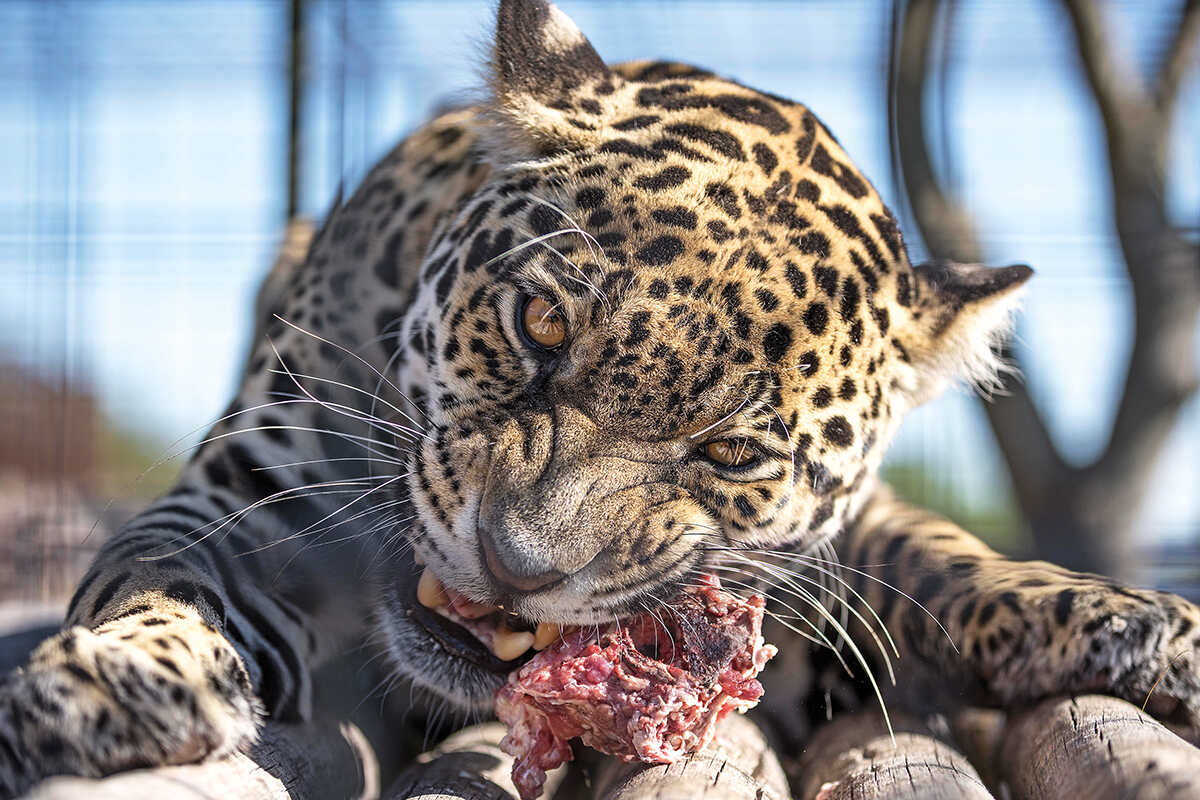
Born to be wild
Doug Tompkins had been captivated with the idea of returning jaguars to the wild since he bought the San Alonso estate in Iberá in 1996. But it wasn’t until 2013, following the reintroduction of other species – such as the giant anteater, red-and-green macaw and pampas deer – that things started to happen. That the jaguar programme took so long to get up and running is hardly surprising – reintroducing these big cats is incredibly challenging. It took two years and a couple of million US dollars just to build the sprawling, Jurassic Park-esque enclosures that allows pre-release animals to live on San Alonso in near-natural conditions.
Once San Alonso’s enclosures were complete, and the necessary bureaucratic hurdles negotiated, a motley collection of captive jaguars began to arrive from zoos and rescue centres in Argentina, Paraguay and Brazil, and the breeding programme could begin in earnest. Eventually, some of these animals were shifted to larger pens, where they could hone their hunting skills by preying on live animals, such as wild boar (an introduced species in Iberá ) and capybara.

On 6 January 2021, conservationists on San Alonso finally opened up a pen that held two four-month-old jaguar cubs, Karai and Porã, and their mother, Mariua –
a jaguar that had been brought from Brazil – giving them access to the entire Great Iberá Park. It was the first time that jaguars had roamed free here for 70 years.
‘That was one of the greatest days of my life,’ says Kristine Tompkins. ‘I never imagined it could happen. But when those jaguars walked out of the gate, I thought, “I could die tomorrow.” Now everything else is icing on the cake.’
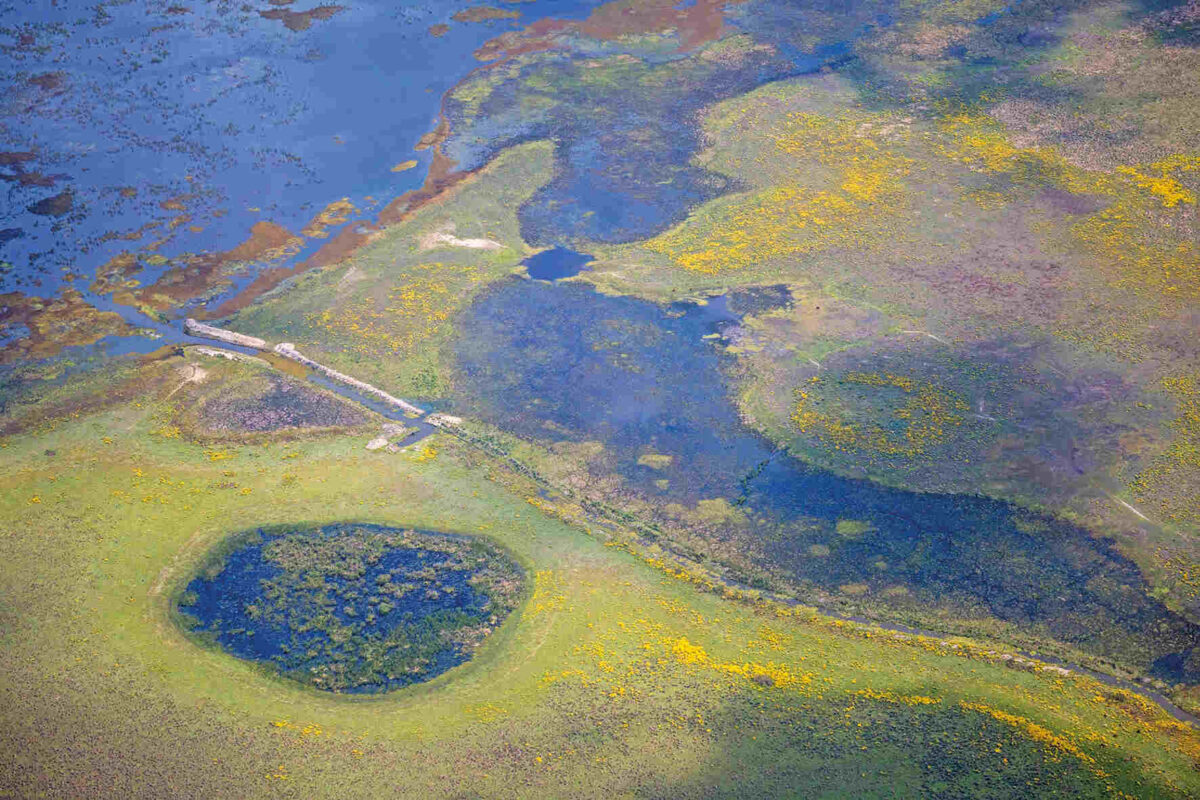
An ongoing process
Today, following further releases, Iberá’s wild jaguar population stands at 12, with four cubs having been born outside the enclosures. With an abundance of prey for the cats, the carrying capacity of the park is estimated to be around 100 animals. With the reintroduction programme ongoing, the FRA estimates that this figure could be reached within a decade. The aim is to gradually create a core population in and around San Alonso that will naturally disperse out across the wetlands as it grows.
‘We tend to release the females first, with cubs, and then the males,’ explains Sebastián Di Martino, FRA’s conservation director. ‘If we released males first, they would simply wander off trying to find females, which have smaller territories.
‘We need to ensure that every one of these jaguars is as well-prepared for a life in the wild as possible,’ he continues. ‘People love it when they see the door of an enclosure lifted and an animal takes its first steps to freedom, but for the animal itself, acclimatising to the new environment is incredibly stressful. The fact that four cubs have now been born in the wild is really encouraging.’
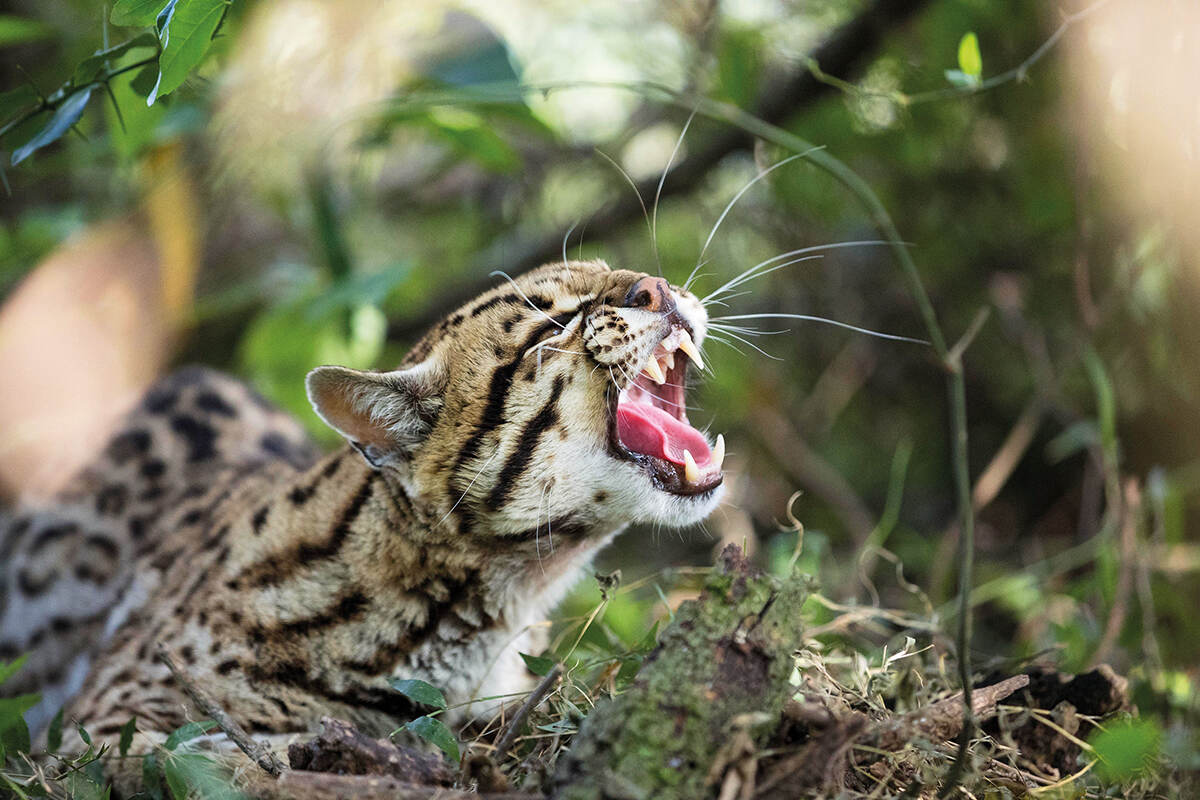
Natural production
As with any rewilding initiative, reintroducing animals back into Iberá would have been pointless if the original drivers of their disappearance had still been in effect.
‘Corrientes is not a wealthy province and is also very traditional,’ explains Marisi López, FRA’s parks and communities coordinator. ‘In the past, the economy was all about cows, farming, timber and hunting – not conservation. At the beginning, when we were buying land and starting the whole rewilding process, we had many fights with traditional producers. They told us that if we started conservation in the wetlands, they wouldn’t be productive any more.’
To counter this argument, and to ensure local communities would benefit from the return of wildlife to Iberá – and therefore buy in to the rewilding process – FRA came up with the concept of producción de naturaleza (‘production of nature’). ‘We knew we had to change the economy, to develop nature-based tourism as a way for local people to derive value from the park,’ says López. ‘Otherwise, the old ways would have persisted. We had to change people’s mindsets and show them that live animals were way more valuable than dead ones.’
Over the past decade, FRA has invested in developing park infrastructure such as access gates, roads, trails, huts, campsites and signage, as well as educational, training and other outreach programmes. Every time a jaguar is released, for example, local communities are given a presentation and invited to the park.
Iberá has also been promoted as one of Argentina’s top wildlife-watching destinations. ‘When it comes to tourism, it’s all about striking the right balance,’ says López. ‘We don’t want the park to be inundated with tourists, which could negatively impact nature. On the other hand, rewilding needs to generate jobs and reliable revenue.’
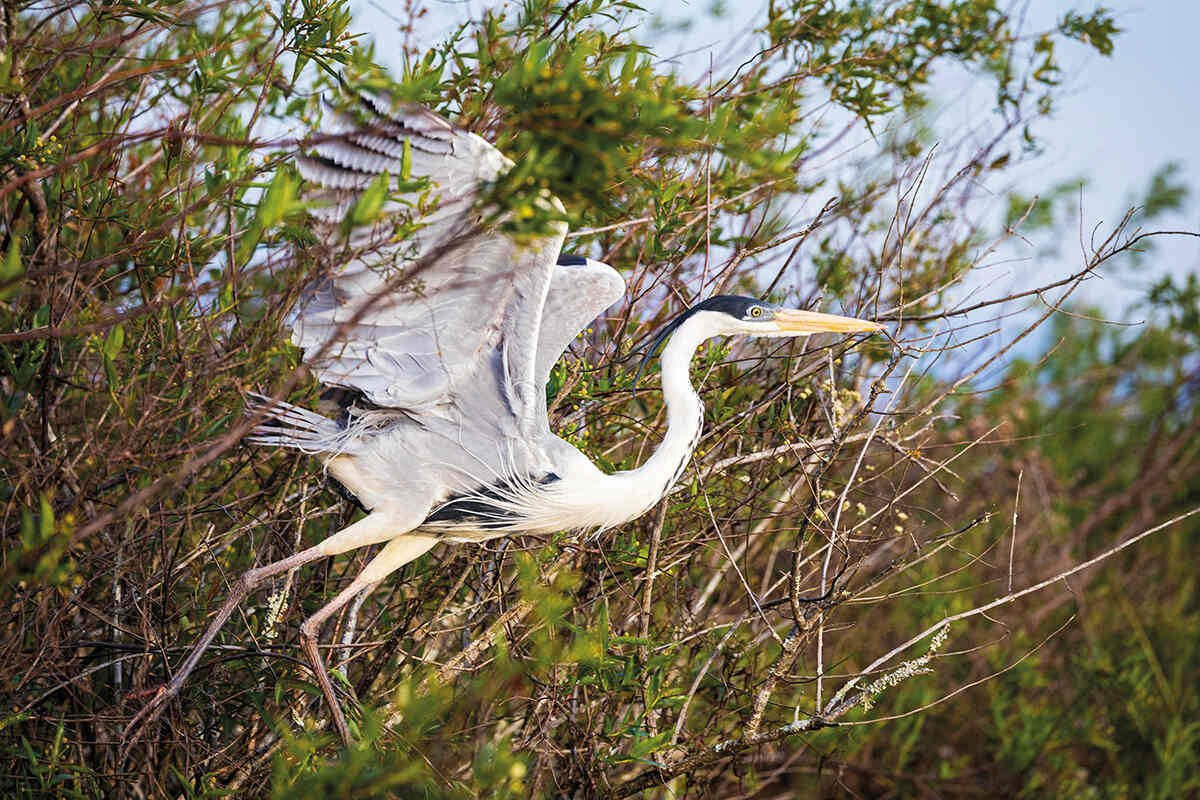
From hole to heart
FRA’s efforts are paying off. More than 50,000 tourists visited Great Iberá Park in 2021, the highest number since it was created, while more than 100 chefs and 200 artisans are thriving in nearby communities. In Colonia Carlos Pellegrini, a village of around 900 residents on the very edge of the park, 95 per cent of people live off tourism.
Young people who once left the area in search of better economic opportunities are now returning home, while former hunters have become rangers and guides.
‘Iberá has huge potential,’ says Duncan Grossart, whose UK-based travel company Journeys With Purpose offers exclusive, rewilding-focused tours of the wetlands. ‘A few years ago, nobody knew about this place, even in Argentina. In the New York Times last year, it was ranked sixth out of the 52 best places in the world to experience nature. In terms of the benefits to nature and people, this is already a rewilding showcase.’
‘In the past, Iberá was seen as a big black hole in the middle of Corrientes,’ adds Marisi López. ‘The places with a lot of water were seen as unproductive wasteland. Today, thanks to rewilding, the park has become the economic heart of the province. More and more Correntinos [the people of Corrientes] think of Iberá as a place that can generate money and jobs. But more than this, they are proud to call Iberá their home – they want to protect it.’
Daniel Allen works as an editor for Rewilding Europe; Cain Blythe is CEO of leading UK-based rewilding consultancy Ecosulis. Journeys With Purpose (www.journeyswithpurpose.org) offers transformative experiences in wild nature, with a focus on rewilding.




